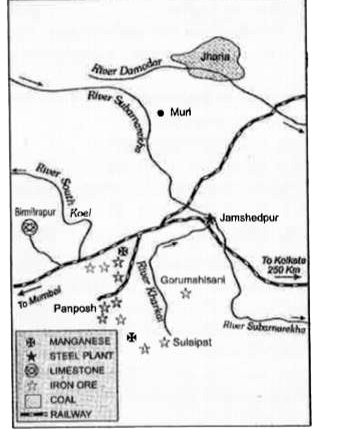How many following purpose carried transpiration?
(i) Creates transpirational pull for absorption of water
(ii) Supplies water for photosynthesis
(iii) Transport minerals in every direction with in a plant
(iv) Cools leaf surface
(v) Maintains the shape and structure of the plant
Four
Five
Three
Two
The correct Answer is:A
Step by step video, text & image solution for How many following purpose carried transpiration? (i) Creates transpirational pull for absorption of water (ii) Supplies water for photosynthesis (iii) Transport minerals in every direction with in a plant (iv) Cools leaf surface (v) Maintains the shape and structure of the plant by Biology experts to help you in doubts & scoring excellent marks in Class 12 exams.
Topper's Solved these Questions
Similar Questions
Describe transpiration pull model of water transport in plants. What are the factors influencing transpiration? How is it useful to plants?
View SolutionFind the compoenemts of the following compound statements.
(i) Numbre 7 is prime and odd.
(ii) Chennai is in India and is the capital of Tamil Nadu.
(iii) The number is 100 is divisible by 3, 11 and 5
(iv) Chandigarh is the capital of Haryana and UP.
(v) √7 is a rational number or an irrational number.
(vi) 0 is less than every positive integer and every negative integer .
(vii) Plants use sunlight, water and carbon dioxide for photosynthesis.
(viii) Two lines in a plane either intersect at one point or they are parallel .
(ix) A rectangle is a quadrilater or a 5 sided polygon.View Solution
Knowledge Check
- Question 1 - Select One
Transpiration pull or water tension in leaf is responsible for which one of the following methods of absorption of minerals by the plants from soil?
AActive absorption of mineralsBMass flowCDonnan eqilibriumDIonic exchange - Question 2 - Select One
Which of the following are correct regarding transpiration pull theory are
I. rate of ascent of sap is not affected by rate of transpiration.
II. Tension created by loss of water due to transpiration can be observed with the help of an instrument called potometer.
III. pressure inside the tracheary element when measured with the help of instrument like pressure bomb is found to be negative.
IV. during period of high transpiration, the diameter of stem increases.AOnly IIBI and IICOnly IVDIII and IV - Question 3 - Select One
Which of the following statements are the functions of a medullary ray in plants ?
(i) Absorption
(ii) Secondary growth
(iii) Transmission of water and food
(iv) Seat of origin or inter-fascicular cambiumA(i), (ii) and (iii)B(i), (ii) and (iv)C(ii), (iii) and (iv)DOnly (i) and (iii)
Following are some features of plants
(i) They lose a lot of water through transpiration.
(ii) Their leaves are always broad and flat.
(iii) They lose very little water through transpiration.
(iv) Their roots grow very deep into the soil.
Which of the combination of above features are typical of desert plants?View SolutionStudy the following diagram and answer the questions that follow:

(i) Identify and name the steel plant shown in this diagram.
(ii) Name the mining fields which supply coal and limestone to this plant.
(iii) Mention the source of water for this plant.View SolutionWhich of the following statements is/are not incorrect?
(i) Water and minerals, and food are generally moved by a mass or bulk flow system.
(ii) Bulk flow can be achieved either through a positive hydrostatic pressure gradient or a negative hydrostatic pressure gradient.
(iii) The bulk movement of substances through the conducting tissues of plants is called translocation.
(iv) Xylem translocates organic and inorganic solutes, mainly from roots to the aerial parts of the plants.
(v) Phloem translocates water, mineral salts, some organic nitrogen and hormones, from the leaves to other parts of the plants.View SolutionSelect the correct statements:
I. Effect of root pressure in transport of water is more important during day.
II. Effect is root pressure in transport of water is more important at night.
III. Transpiration pull is the major driving force in the movement of water in xylem during the day.
IV. Transpiration pull in the major driving force in the movement of water in xylem during the night.View SolutionThe main functions of the root system among the following are
I) Absorption of water and minerals from the soil
II) Providing proper anchorage to the plant parts
III) Storing reserve food materials
IV) Synthesis of some Plant growth regulatorsView Solution
